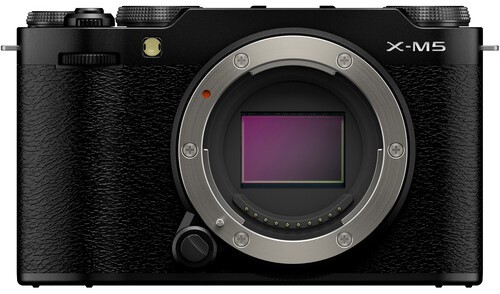Photography is more accessible than ever, but choosing your first camera can feel overwhelming. With countless options flooding the market, from budget-friendly point-and-shoots to professional DSLRs, new photographers often struggle to find the sweet spot between capability and simplicity. The key is finding a camera that won’t intimidate you while still delivering the image quality and features you need to grow as a photographer.
The Fujifilm X-M5 stands out as a fantastic option for beginners because it blends intuitive operation with powerful features that rival much more expensive cameras. This compact mirrorless camera brings together decades of Fujifilm’s imaging expertise in a package that’s both approachable for newcomers and capable enough to satisfy your growing creative ambitions. It’s the kind of camera that makes you want to shoot more, not less.
So, the question is, why is this a great camera for beginners?
Let’s explore six key features that make the Fujifilm X-M5 a top pick for aspiring photographers. From its user-friendly interface to its professional-grade image quality, I’ll explore why this camera deserves serious consideration for your first step into serious photography.
Table of Contents
- Intuitive Controls with Learning in Mind
- Compact, Lightweight Design for Everyday Use
- Excellent Image Quality Right Out of the Box
- Fujifilm’s Film Simulations: Creative Freedom Made Easy
- Affordable Entry Point for the Fujifilm X-M5
- Connectivity and Video Features for Modern Creators
- A Smart Choice for Beginners
- Frequently Asked Questions
Intuitive Controls with Learning in Mind

One of the biggest hurdles for new photographers is learning to navigate a camera’s control system. The Fujifilm X-M5 addresses this challenge head-on with a thoughtfully designed interface that prioritizes ease of use without sacrificing functionality. The camera’s simplified button layout eliminates the clutter found on many competing models, focusing on the controls you’ll actually use regularly.
The X-M5’s top dials are particularly brilliant for beginners. Instead of hunting through menu systems, you can quickly adjust key settings like shooting mode and film simulation with a simple turn of a dial. This tactile approach to camera control feels natural and helps new users understand the relationship between different settings and their creative impact. The prominent placement of these dials also means you’re less likely to accidentally change settings while shooting.
The 3-inch 1.04m-Dot tilting LCD touchscreen further reduces the learning curve by providing familiar smartphone-like interaction. You can tap to focus, swipe through images, and navigate menus with intuitive gestures. This touchscreen implementation is especially valuable for beginners who might feel intimidated by traditional camera controls. The screen’s ability to flip and rotate also makes it easier to compose shots from various angles, encouraging experimentation and creative growth.
What sets the Fujifilm X-M5 apart is how it scales with your growing expertise. While the camera is simple enough for complete beginners, it offers manual control options for photographers ready to take the next step. You can gradually transition from automatic modes to manual controls at your own pace, making it a camera that grows with you rather than one you’ll quickly outgrow.
Compact, Lightweight Design for Everyday Use
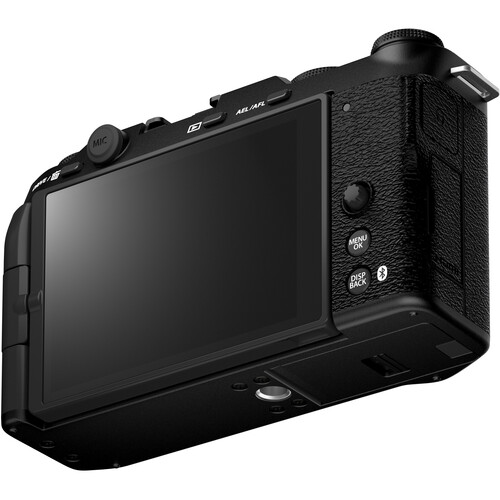
At just 12.5 ounces without a lens, the Fujifilm X-M5 is remarkably portable for a camera with such capable specifications. This lightweight design isn’t just about convenience—it’s about making photography more accessible and enjoyable. When a camera is light enough to carry comfortably all day, you’re more likely to have it with you when those perfect moments arise. This constant availability is crucial for beginners who are still learning to see photographic opportunities in everyday situations.
The camera’s compact 4.4-inch width makes it discreet enough for street photography and travel, two genres where portability is essential. Unlike bulky DSLRs that can feel intimidating to carry and use in public, the X-M5 blends seamlessly into your daily routine. This size advantage becomes even more apparent when you’re hiking, traveling, or simply exploring your neighborhood with camera in hand. The reduced bulk means less fatigue and more comfort during extended shooting sessions.
Beyond practical considerations, the X-M5’s retro-inspired design carries significant aesthetic appeal. The rangefinder-style body evokes classic cameras while maintaining modern functionality. This stylish appearance can be particularly appealing to younger photographers or those drawn to vintage aesthetics. The camera’s good looks aren’t just superficial—they reflect Fujifilm’s commitment to thoughtful design that honors photographic heritage while embracing contemporary technology.
The compact design also extends to the X-mount lens ecosystem, which includes numerous small and lightweight options perfect for beginners. Unlike some camera systems where even basic lenses can be heavy and unwieldy, Fujifilm’s X-series lenses maintain the system’s portability advantage. This means your entire kit—camera and lenses—can remain manageable even as you expand your collection over time.
Excellent Image Quality Right Out of the Box
As discussed by Pixel Village in the video above, at the heart of the Fujifilm X-M5 is its 26.1-megapixel APS-C X-Trans 4 CMOS sensor—the same sensor found in the X100V. This sensor is more than 16 times larger than a typical smartphone sensor, providing dramatically better light-gathering capabilities and detail resolution. For beginners upgrading from phone photography, this difference is immediately apparent in the richness and depth of their images.
What makes this sensor particularly special is its randomized pixel array that mimics the organic structure of film grain. This design choice results in more natural color transitions and reduced digital artifacts compared to traditional sensor layouts. The X-Trans technology produces images with a distinctive, film-like quality that many photographers find immediately appealing. This organic rendering means your photos will have character and depth straight out of the camera, without requiring extensive post-processing to look professional.
The camera’s JPEG engine deserves special mention for its ability to produce stunning images without any editing. Many beginners feel overwhelmed by the prospect of learning photo editing software, but the Fujifilm X-M5 delivers beautiful results that often need no further enhancement. The camera’s color science, developed from decades of film manufacturing expertise, ensures accurate and pleasing color reproduction across a wide range of shooting conditions.
Low-light performance is another area where the X-M5 excels, thanks to its larger sensor and advanced processing. The camera’s AI-driven autofocus system includes eye-tracking and subject recognition, helping beginners achieve sharp focus even in challenging conditions. This reliable performance means more successful shots and fewer frustrating moments, which is crucial for maintaining enthusiasm during the learning process. The fast autofocus also makes the camera responsive enough for capturing spontaneous moments, whether you’re photographing family gatherings or street scenes.
Fujifilm’s Film Simulations: Creative Freedom Made Easy
As Johannes Brandt González discusses in the video above, one of the most distinctive features of the Fujifilm X-M5 is its collection of 20 built-in film simulation modes. These simulations recreate the look and feel of classic Fujifilm film stocks, from the vibrant colors of Velvia to the muted tones of Classic Chrome. For beginners, these modes offer an immediate way to achieve professional-looking results without needing to understand complex color grading or photo editing techniques.
Eight of these film simulations are accessible directly from the camera’s top dial, making it easy to experiment with different looks while shooting. This immediate access encourages creative exploration and helps beginners understand how different color palettes and contrasts affect the mood of their images. Instead of spending hours learning editing software, new photographers can focus on composition and timing while the camera handles the aesthetic treatment.
The film simulations go beyond simple color filters—they’re sophisticated interpretations of actual film characteristics, including grain structure, color response, and tonal curves. This authenticity means your images will have the distinctive look that made Fujifilm’s film stocks legendary among professional photographers. The Grain Effect mode can even add authentic film grain texture, creating images that feel genuinely vintage rather than artificially processed.
For beginners who want to develop their own editing skills eventually, the film simulations serve as excellent learning tools. By studying how different simulations affect the same scene, new photographers can begin to understand color theory and develop their aesthetic preferences. The Fujifilm X-M5 also offers Color Chrome and Color Chrome Blue effects, which enhance saturation and gradation in ways that demonstrate advanced color science principles through practical application.
Affordable Entry Point for the Fujifilm X-M5
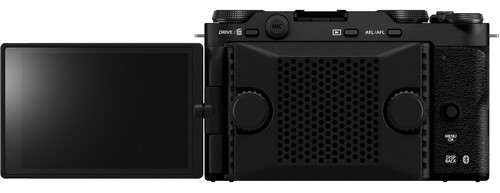
The Fujifilm X-M5 represents exceptional value in the beginner mirrorless camera market, offering features and image quality typically found in much more expensive models. When compared to competitors like the Canon EOS R50 or Sony ZV-E10, the X-M5 holds its own in terms of specifications while often providing superior color science and build quality. This competitive pricing makes it accessible to beginners who want professional-grade capabilities without the professional-grade price tag.
The used camera market presents even more compelling opportunities for budget-conscious beginners. Platforms like MPB offer quality-assured used cameras with comprehensive return policies, making it safer for newcomers to buy pre-owned equipment. A used Fujifilm X-M5 can often be found for significantly less than retail price, and with a six-month warranty on most items, MPB gives you even more peace of mind when investing in a new-to-you camera.
Buying used isn’t just about saving money—it’s about making smart financial decisions that allow you to invest in other essential accessories. The money saved on a used camera body can go toward a quality memory card, a sturdy tripod, or a protective camera bag. These accessories are crucial for getting the most out of your photography experience, and having a complete kit often matters more than having the absolute latest camera model.
Connectivity and Video Features for Modern Creators
Today’s photographers need more than just still image capabilities, and the Fujifilm X-M5 delivers comprehensive connectivity and video features that align with modern content creation needs. The camera’s integrated Wi-Fi and Bluetooth connectivity make it effortless to transfer images to your smartphone for instant sharing on social media platforms. This seamless integration between camera and phone eliminates the friction that often prevents beginners from sharing their work consistently.
As Pascal Basel discusses in the video above, the X-M5’s video capabilities are particularly impressive for a camera in this price range. With 6.2K open-gate recording capability and 4K video at 30fps, the camera can handle serious video production tasks. The inclusion of specialized video modes like Background Defocus, Product Priority, and Portrait Enhancer shows Fujifilm’s understanding of contemporary content creation needs. These features are especially valuable for beginners who want to experiment with video content without mastering complex manual controls.
The camera’s vlog-specific features demonstrate thoughtful design for modern creators. The 9:16 Short Movie mode creates vertical content in 15, 30, and 60-second durations—perfect for TikTok, Instagram Reels, and YouTube Shorts. The prominent red recording indicator and repositioned connector ports show attention to practical video shooting needs. These details might seem minor, but they significantly improve the user experience for content creators.
Audio quality receives equal attention with three built-in microphones and four sound capture modes optimized for different situations. The 3.5mm microphone socket allows for external audio equipment, while in-camera algorithms provide voice enhancement and noise reduction. For beginners exploring video content, these features provide professional-quality audio without requiring expensive external equipment. The Frame.io Camera to Cloud integration even allows direct upload to cloud storage, streamlining the entire content creation workflow from capture to publication.
A Smart Choice for Beginners
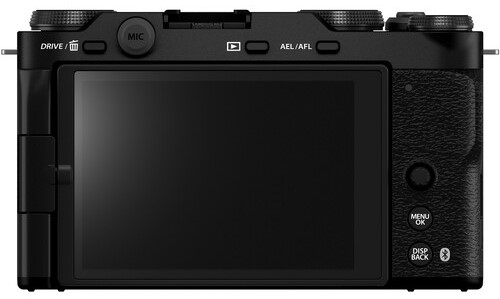
The Fujifilm X-M5 represents a smart choice for beginning photographers who want to invest in a camera that will grow with their skills and interests. Its combination of user-friendly operation, exceptional image quality, and comprehensive feature set makes it stand out in the crowded beginner camera market. The camera’s film simulations alone provide creative possibilities that would require expensive software and extensive learning with other systems.
What makes the X-M5 particularly compelling is how it removes barriers to photographic enjoyment. Its lightweight design encourages daily carry, its intuitive controls reduce frustration, and its excellent JPEG output means you can focus on taking pictures rather than processing them. For beginners who want to explore photography with confidence, knowing they don’t need to spend a fortune to get professional-quality results, the Fujifilm X-M5 delivers exceptional value.
Whether you buy new or explore the used market through reputable dealers like MPB, the X-M5 opens doors to a comprehensive camera system that can support your photographic journey for years to come. Don’t overlook the value of buying used from trusted platforms—it’s often the smartest way to get quality gear while leaving room in your budget for the lenses and accessories that will truly enhance your photography experience.
Frequently Asked Questions
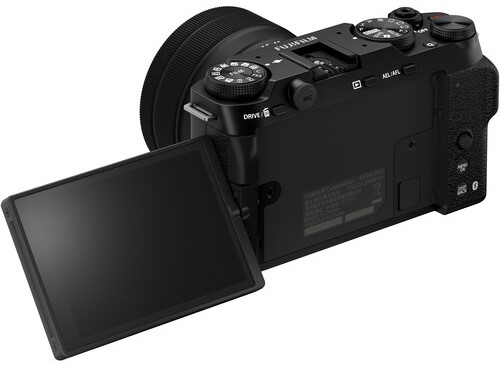
Is the Fujifilm X-M5 good for complete beginners?
How does the X-M5 compare to smartphone cameras?
Can I use the X-M5 for video content creation?
Is it worth buying a used Fujifilm X-M5?
What lenses should I buy first for the X-M5?
How long does the battery last on the X-M5?
A quick heads-up: If you snag something through our affiliate links or check out our sponsored content, we might earn a commission at no extra cost to you. But fear not, we’re all about recommending stuff we’re truly stoked about!

